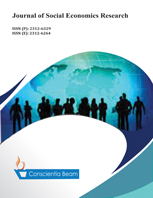Analyzing the determinants of healthcare utilization inequity in the Vietnam economy
DOI:
https://doi.org/10.18488/35.v11i1.3613Abstract
Ensuring the fair and equal availability of healthcare services is an important goal that every country strives for, including the Vietnam economy. The Vietnamese government has launched various strategies to reach healthcare utilization equity since 2008. This study aims to comprehensively investigate healthcare utilization equity trends and their determinants in Vietnam, employing the Concentration Index (CI) approach and decomposed analysis of data from the Vietnam Household Living Standards Survey (VHLSS) conducted in both 2008 and 2018. A decline in the CI from 0.0654 (2008) to 0.0400 (2018), indicating a lower level of healthcare utilization inequality, is evidence of the findings' significant improvements in healthcare access equity in Vietnam. Furthermore, the main determinants of inequality in healthcare utilization including gender (male), age, marital status (single or married), residency (urban), race (majority), education (under primary and primary certificates), household size, and insurance, have been empirically found. In order to mitigate healthcare access inequality, the current universal health insurance policy is workable. However, certain limitations within insurance programs, such as restricted coverage and provider networks, need to be addressed to ensure a comprehensive and accessible policy for all.

